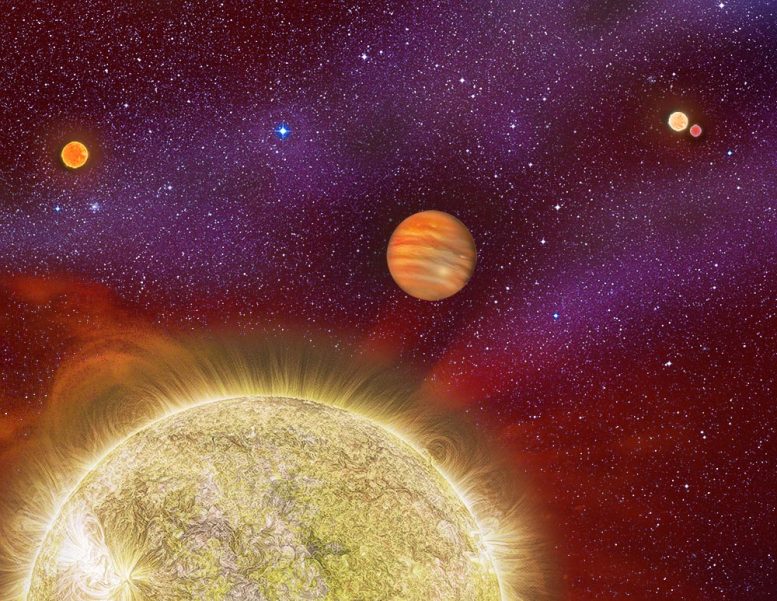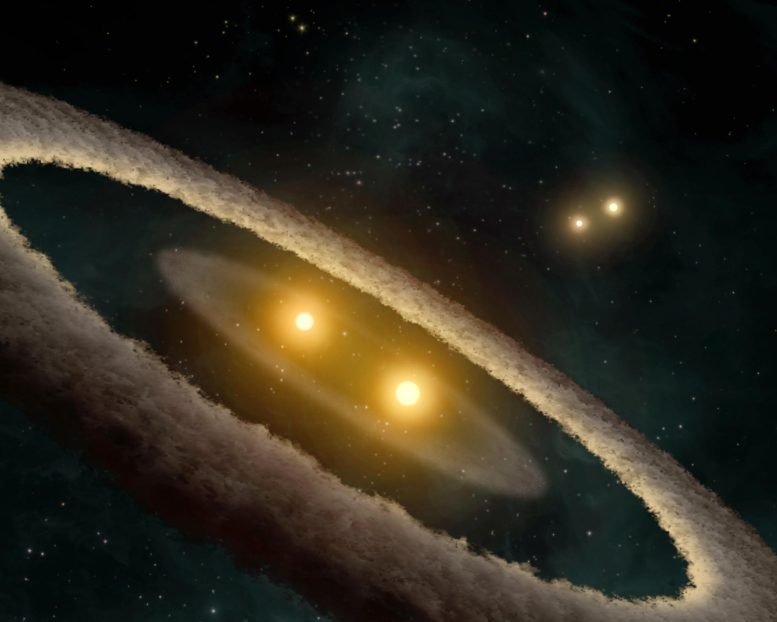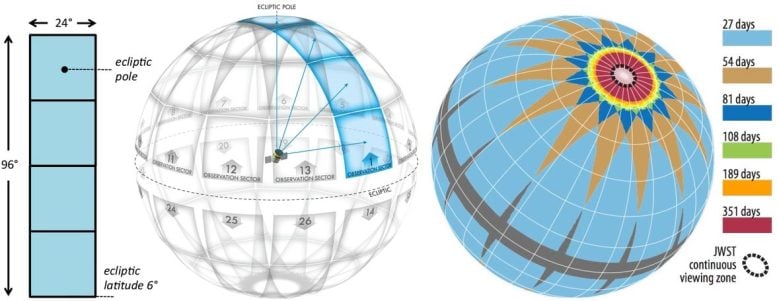NASA’s TESS Finds Almost 100 Quadruple Star Systems

Artist’s conception of the 30 Ari star system. The system is composed of four stars. Credit: Art by Karen Teramura, UH IfA
TESS is equipped with four CCD cameras with adjacent field-of-views to produce a 4 x 1 array, or ‘observing sector,’ yielding a combined field-of-view of 96x 24 degrees, as illustrated above. Credit: NASA
To find these systems, it took a collaboration between some of the usual suspects—the NASA Goddard Space Flight Center (GSFC) Astrophysics Science Division and the 
This is an artist’s illustration of HD 98800, a quadruple star system located in the TW Hydrae association. It’s not part of the new catalogue and was discovered previously. Credit: NASA/JPL-Caltech/T. Pyle (SSC)
The researchers focused their effort on identifying triple and quadruple star systems, but the results go beyond those multiple star systems. They also found “…the first sextuply-eclipsing sextuple stellar system and the first transiting circumbinary planet detected from one sector of TESS data,” the authors explain.
Quadruple star systems contain two pairs of eclipsing binary (EB) stars. However, they’re only EBs if they eclipse one another from our vantage point. All those transits and eclipses can be difficult to entangle, which explains the helping hand from dedicated citizen scientists.
The researchers were interested only in specific quadruple star systems, and they deliberately excluded others. “We note that the targets listed in this catalogue are quadruple candidates that each originate from a single TESS source, i.e. the two-component EBs are unresolved in TESS data,” they write. These quad systems are in the catalogue because they exhibit changes observable in human timescales. “The reason is that for the purposes of this work, our interests are in close quadruple systems that can exhibit dynamically-interesting interactions on a human timescale (months to years),” they explain.
That explanation is a bit wordy, but it boils down to this: TESS pixel width can be vast. If TESS locates a pair of EBs separated by two TESS pixels, and if the EBs are 500 parsecs away from us, that means the EBs are separated from each other by up to 20,000 AU. At that vast distance from one another, it could take generations of human observations to notice any interactions between the stars. Systems must be closer to one another to exhibit interesting interactions observable in months or years, so they must be in the same TESS pixel. This is what necessitated the painstaking pixel-by-pixel analysis.
The systems in the catalogue survived a stringent vetting process. The team also encountered many false positives. A field star near the target often appeared to be another EB until deeper analysis ruled it out. Other times they detected two EB pairs, but they were not interconnected and were too distant from each other to constitute a quadruple star system. There were also triple star systems whose eclipse pattern mimicked a quadruple star system. All in all, there were five false-positive scenarios.
In their summary, the authors write that “The target stars have been identified through visual inspection and exhibit two sets of eclipses with two distinct periods, each with primary and, in most cases, secondary eclipses. All targets have been uniformly-vetted and passed a series of tests, including pixel-by-pixel and
photocenter motion analysis.”
Why are astronomers interested in quadruple systems?
Multiple star systems can reveal a lot about stellar evolution pathways. Astronomers and astrophysicists are interested in stellar stages of evolution like short-period binaries, common-envelope events, Type Ia Supernovae, and 30 Arietis. According to that discovery, the system is home to an enormous gas giant ten times more massive than NASA’s TESS Finds Almost 100 Quadruple Star Systems


